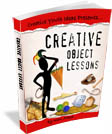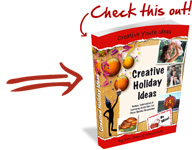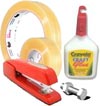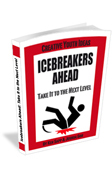![]()
At sunrise everything is luminous, but not clear. It is often the same with those we live with and love and should know: they elude us. Yet you can love completely without complete understanding.
Norman Maclean
![]()
At sunrise everything is luminous, but not clear. It is often the same with those we live with and love and should know: they elude us. Yet you can love completely without complete understanding.
Norman Maclean
A rabbi asked his students, When is it at dawn that one can tell the light from the darkness?
One student replied, When I can tell a goat from a donkey.
No, answered the rabbi.
Another said, When I can tell a palm tree from a fig.
No, answered the rabbi again.
Well, then what is the answer? His students pressed him.
Only when you look into the face of every man and every woman and see your brother and your sister, said the rabbi.
Only then have you seen the light. All else is still darkness.
Without the knowledge of our wretchedness, the knowledge of God creates pride.
With it, the knowledge of God creates despair.
The knowledge of Christ offers a third way, because in him we find both God and our wretchedness.
-Blaise Pascal
Materials
* Find a few of the puzzles which display two pictures where there are differences between the pictures.
(If you cannot find such puzzles, photocopy a children’s coloring book then “whiteout” lines and add additional lines etc. to make your own puzzles. )
* As a variation, you can copy a couple puzzles to transparency sheets and place them on the overhead projector for kids to find the differences.
Objective
Kids must identify the differences in the two pictures.
Application
* We use the Bible as our standard in which to evaluate our life. When things are missing that should be there, or things are added that should not be there, it is called sin. Sin is when our lives do not exactly match God’s standard.
* There are two types of sin in the Bible since of ommission (leave out something) or sins of commission (adding something that we shouldn’t do).
* Can you spot the mistakes in your life? The key to finding the differences is to compare our lives to the Bible. If we are not doing the things the Bible commands then we are sinning. If we are doing the things the Bible forbids then we are also sinning. Only through comparing our lives to God’s Word will we know if we are living rightly.
![]()
MORE IDEAS? See “Creative Object Lessons”
200 page e-book that explains everything you need to know when planning your very own object lessons. It contains 90 fully developed object lesson ideas and another 200 object lesson starter ideas based on Biblical idioms and Names / Descriptions of God.
Learn More…
Washed up on the beach, stranded, with no means of getting back to the sea, except by tide or accident.
A wise man walked along a beach, and saw a gracefully dancing human figure. As he approached the figure, he discovered a child, who was not dancing at all, but bending and reaching down to sift through the debris and gently toss something back into the sea.
“What are you doing?” asked the wise man. The child smiled brightly, pointed upward and, with exquisite simplicity, replied, “The sun is up, the tide is going out. If I don’t do something, they will die.”
The wise man surveyed the vast expanse of beach. Starfish littered the shore in numbers beyond calculation. The hopelessness of the child’s plan became clear. “But there are more starfish on this beach than you can ever save before the sun is up. Surely you cannot hope to make a difference.”
The child listened politely, then bent down, picked up another starfish, and tossed it gently into the sea, just beyond the breaking waves, and exuberantly declared, “I made a difference to that one.”
We have all been gifted with the ability to make a positive difference. If we accept and acknowledge that gift, we gain the power to shape the future. Like the starfish, you have been given an opportunity to surf upon the shores of life, touched by a child’s simple wisdom: “The sun is up, the tide is going out. If we don’t do something, they will die.”
One starfish at a time, one day at a time, we make a difference, a life is turned around and that starfish becomes a star.
“The King will reply, ‘I tell you the truth, whatever you did for one of the the least of these brothers of mine, you did for me.’”
– Matthew 25:40
Copyright 2005 by Ken Sapp
Based upon a story by Jack Canfield and Mark V. Hansen popular for their “Chicken Soup for the Soul,” series of books.
 MORE IDEAS? See “Creative Object Lessons”
MORE IDEAS? See “Creative Object Lessons”
200 page e-book that explains everything you need to know when planning your very own object lessons. It contains 90 fully developed object lesson ideas and another 200 object lesson starter ideas based on Biblical idioms and Names / Descriptions of God.
1. Build a Relationship – Establish a positive, personal relationship with your mentee
* Establish mutual trust and respect
* Maintain regular interaction and consistent support
* Remember that relationships take time. Don’t expect immediate results.
* Make your time spent with the youth enjoyable and fun
2. Develop Life Skills – Help mentee to develop or begin to develop life skills
* Work with your mentee to accomplish specific goals
* Instill the framework for developing broader life-management skills (i.e. spiritual walk, decision making skills, goal setting skills, conflict resolution, money management, etc.)
3. Provide Resources – Assist mentee on obtaining additional resources
* Provide awareness of church, community, educational, and economic resources and how to get them
* Act as a guide and/or advocate, “coach” and/or model
* Conduct your role of mentor as a friend rather than a counselor
4. Enhance Communication – Increase mentee’s ability to interact with people/groups/things from various backgrounds (cultural, religious, racial, socioeconomic, etc.)
* Respect and explore differences among people/groups from various backgrounds
* Introduce student/mentee to different environments, i.e. workplace vs.school setting; Christian vs. secular
* discuss differences in behavior, attitude, and style of dress
 MORE IDEAS? See “Creative Object Lessons”
MORE IDEAS? See “Creative Object Lessons”
200 page e-book that explains everything you need to know when planning your very own object lessons. It contains 90 fully developed object lesson ideas and another 200 object lesson starter ideas based on Biblical idioms and Names / Descriptions of God.
Materials
Paper and pencils for each group of youth
Activity
Have a competition between teams of children to name as many things as possible that are associated with love. Based upon these lists have kids form a definition of “true Love.” You could also make a list of things on your own (like those listed below) and play a game of charades.
Possible Items
Heart, Chocolate, Roses, Carnations, Dinner, Kisses, Cupid, Love, Valentine Card, Be Mine, I’m Yours, Beloved, I love you, True Love, Be My Valentine, Romance, 14th, courtship, Date, February, Arrows, Boyfriend, Girlfriend, Candlelight, Candy, Diamonds, Flowers, Forever, Gifts, Hugs, Infatuation, Love Letters, Lovebirds, Lovers, Only You, Passion, Pink, Red, Poetry, Relationship, Secret admirer, Sweetheart, Flirting, Serenade, Love Songs, Stuffed Animals, Cuddle, Honey, Casanova, Amore, Wink, Heartthrob, God, Sacrifice, Marriage, Wedding, honeymoon, ring, family, (sex).
 Holiday Collection
Holiday CollectionCreative Holiday Ideas has over 300 pages of ideas to help you plan your next New Year’s Day, Valentine’s Day, Mother’s Day, Father’s Day, Halloween or Fall Festival, and Thanksgiving event. If you’ve ever wondered what you’re going to do for all these holidays and how you’re going to do it, this resource is for you.
=> Tell me more about the Holiday Collection
 Materials
Materials
Tape, glue, stapler, and a bolt.
Activity
I would like for you to discover what this tape, glue, stapler, and bolt have in common. Think about it.
(Allow them to answer.)
That’s right! They are all used to hold things together. Most of you probably have tape and glue in your desk at school or in your room. You may also have a stapler of your own, or perhaps your teacher or parents do. Your father probably has a jar of bolts in the garage that he uses to hold metal or wooden objects together. Almost everything we have has to be held together by something. Can you name a few other things that hold things together?
Application
There is something else that needs to be held together as well and that is people. We need to be close to people. If we are not, life becomes very sad and lonely. We need to be close to our family, to our friends, and to our fellow church people-plus many others. Let me tell you what holds people together better than anything else: Love! Love is the best tape, the best glue, the best staple, the best bolt that you can find to keep you close to people. There are other things that we sometimes think keep us close to others but they don’t work as well as love. You may think that it’s because you live on the same street that you are friends with a certain person, but if that is all that makes you friends it will be over with the first time you have a serious fight. Sometimes we think we are close friends with someone because we like the same sport or the same games but this usually doesn’t last either. Even living in the same house with your family will not automatically make you close to them. In every case what we really need is love for that person. No matter what you like doing with someone close to you, just remember that to love that person is the most important thing of all. Love will be the tape, the glue, the staple, the bolt that holds us together in unity.
Possible Bible Stories: Greatest Commandment (Matthew 22), Good Samaritan (Luke 10), They will know that we are Christians by our love (John 13:34), Command to Love one Another
Get Help on Your Youth Sermons
Creative Sermon Ideas
This 100 Page e-Book Includes All The Help You Need To Prepare Powerful, Life-Changing Youth Sermons That Will Turn Your Preaching Around And Make Your Youth Sit Up And Listen! Includes 7 Complete Sermons.
–> I want More Youth Sermon Ideas…

Materials
* Tennis ball (small ball)
* newsprint and a marker.
* A Bible.
Activity
1. Form kids into circles of 10-20 people.
2. Ask each group to sit in a circle.
3. Explain that you’re going to toss the ball to someone across the circle.
4. The receiver is to pick out another person across the circle that has not received the ball yet and toss the ball to him or her.
5. Continue tossing until everyone in the circle has had a chance to catch and toss the ball.
6. Repeat the pattern, catching and tossing to the same people as before. But this time, ask kids to each say one thing they really “love” (basketball, skateboarding, trench fries, movies, and so on) before they toss the ball to someone else.
7. On the third round, repeat the catch-and-toss pattern, this time asking kids to each say one thing they really love about the person they’re tossing the ball to (this will probably be much harder than the previous round).
Debrief
* How did you feel when someone told you something he or she loved about you?
* Why is it easier to talk about things we love than about what we love in others?
* What’s one thing we can do in our group to show we love each other?
* Write the answers to the last question on newsprint. Then vote on the best idea and do it at each class.
 Holiday Collection
Holiday CollectionCreative Holiday Ideas has over 300 pages of ideas to help you plan your next New Year’s Day, Valentine’s Day, Mother’s Day, Father’s Day, Halloween or Fall Festival, and Thanksgiving event. If you’ve ever wondered what you’re going to do for all these holidays and how you’re going to do it, this resource is for you.
=> Tell me more about the Holiday Collection

Game Materials
Pieces of paper or notecards with emotions written on them.
Some suggested emotions are:
anger, fear, happy, nervous, bored, bitter, overwhlemed, depressed, at peace, embarassed, loved, proud, detached, shocked, hate, and finally, love.
Game Objective
Display the given emotion until you find the other members of your group.
Game Preparation
There should be at least two people that have each emotion and the total number will depend on how many people you want to have in each team.
Game Play
1. Display the emotion until you find the other members of your group.
2. When you think you have found all your partners/group have a seat.
3. Continue until all groups are seated.
4. Finally have each group strike a pose of their emotion for other teams to guess.
Application / Debrief
* What does love look like?
* What actions show love?
* How did you find your group?
* How do we find love?
* What do our emotions reveal about us?
* Are negative emotions a sin?
* Is it easier to control positive or negative emotions?
* Which emotions are the easiest to show? The most difficult?
 Icebreakers Ahead: Take It To the Next Level
Icebreakers Ahead: Take It To the Next LevelThis 170 page resource not only provides 52 of the world’s most popular group icebreaker activities and games, but also includes lesson ideas and discussion questions to smoothly transition into conversations about the issues common to most groups.
Click here to find out how to get your hands on this incredible resource!